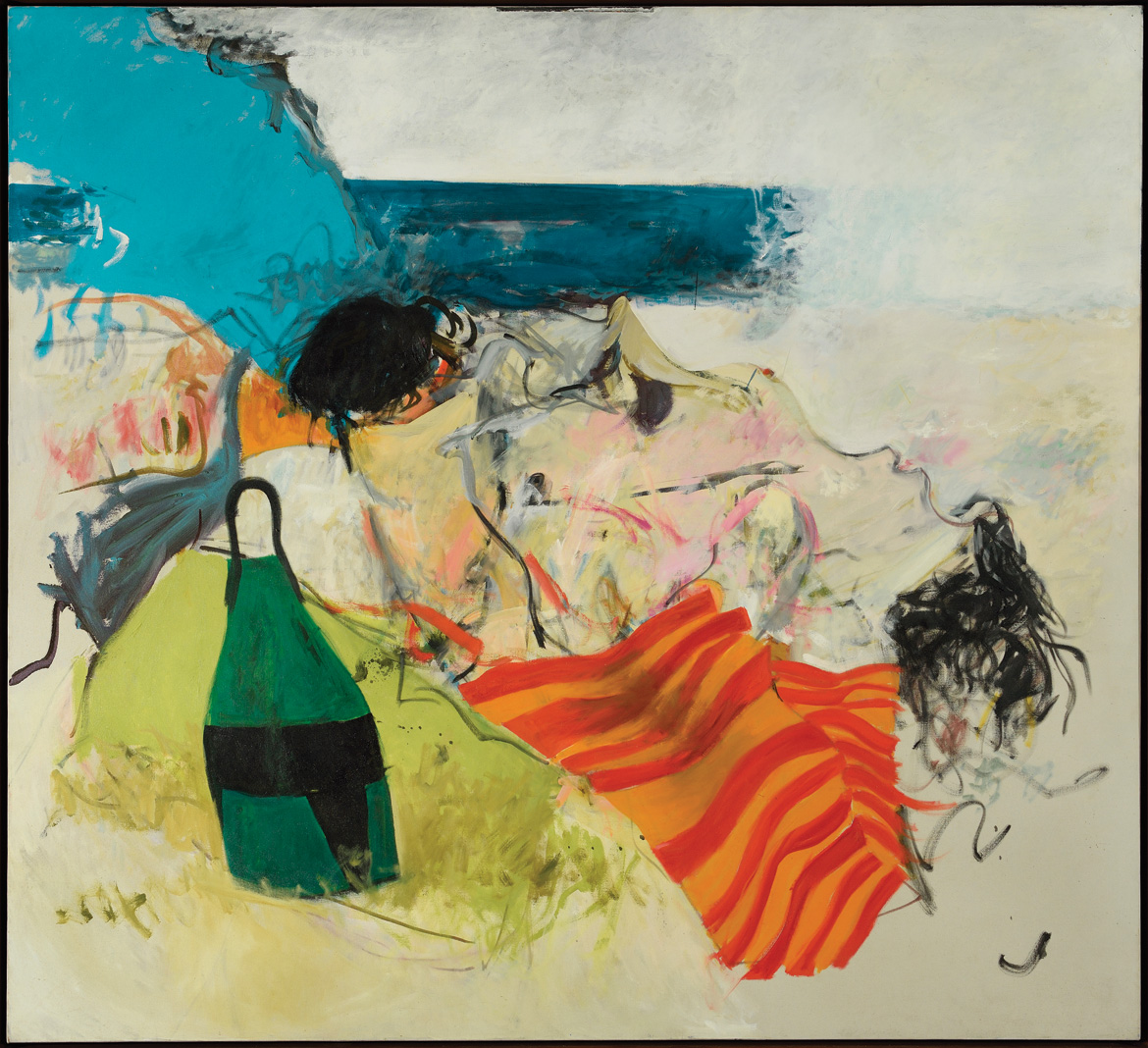Stepping Up To The Plate

Life was cut short at only 47 years old for Walter Plate, an American abstract painter who emerged after World War II. Plate served in the marines before settling in Woodstock, NY, where he’d have his studio and achieve fame in the 1950s and ’60s. His solo exhibits included the Stable Gallery, five Whitney Annuals, and group shows at the Pennsylvania Academy of Fine Arts, Art Institute of Chicago, Corcoran Gallery in Washington D.C., and more.
Plate (1925-1972) and his family would visit his brother, William, in East Hampton annually. These visits contributed to his artistic style. The Pollock-Krasner House and Study Center in Springs will show a selection of 11 paintings on paper by Walter Plate (1925-1972) from August 1 through October 31. The exhibit’s fully illustrated catalog will feature an essay by Plate’s son, Marc, as he offers insight to his father’s background. Indy recently caught up with Marc for an interview.
What was the dynamic like at home?
I saw how hard he worked. It was interesting because my mother was an art teacher in the elementary school system, so she supported his work and the family in the ’50s and ’60s. As an artist, particularly in those times, there was a lot of isolation. He secluded himself in the studio, like many of his artist friends, all day, most of the night, working on whatever. He told me: never be an artist or get married. I took his advice for a long time. And then I ended up doing art in New York for 18 years and got married at 34, had a family.
What do you remember about your childhood visits to East Hampton?
I remember going out there with my brother, father, and my mother to my Uncle Bill’s place. He had a house a block away from the ocean. He and Herman Cherry introduced my father to a lot of the artists in the area. Every summer we would go, there’d be a lot of socializing at night. From mine and my brother’s point of view, it was all just emotion oriented. All we did was just play by the shore and do a lot of events there with other kids.
What do you think influenced your father’s paintings?
When he was in Woodstock, in the ’50s, he was immersed in the mountains and the greenery for most of the year. And that was what was distilled in his paintings. His studio was right there, with a beautiful, panoramic view of the mountains. His paintings were very rich greens, oranges, and red tints. They were easily recognized. Then in the late ’50s and ’60s, he went back to the water more.
My father grew up with water. It’s represented so clearly in his abstraction. It’s probably the most realistic part, the backdrop of the ocean. Virtually every painting is a blue, horizontal body. The greens and oranges segue into each other that became more defined blues, reds, beachy with a very different light. He was definitely very influenced by his natural environment.
Do you have a distinct memory of him you could share?
He taught at Rensselaer Polytechnic Institute three, four days a week, so we would have models come to the studio. And my brother and I would wonder what he does with these women that come into the studio for hours at a time. One day, I went into the studio to see what he was doing after one of them left. On the easel was a big piece of paper with all of these abstract lines that didn’t make any sense. Totally abstract. I thought it was going to be a realistic picture of a reclining woman, but it was just these majestic lines.
How would you describe his style?
He kept with abstract, quasi-abstract impressionism. Seeing these paintings come in and out of the house and the studio, I had no idea what they were. For years, even after I was told there were clues in those paintings, I would try to figure it out. Finally, at a certain belated age, I would see them. Some a little more obvious than others, such as one on Georgica Beach.
Which is your favorite painting?
There’s a picture of my father holding me in front of a painting back in 1955. It was called “Spring.” It was very reminiscent of the Catskill Mountains in the spring, all those colors. Perfectly done, very abstracted. There’s a color reproduction in the catalog. That’s my favorite painting. It’s bright, colorful, optimistic. Having taken his first son to a big show, two years running in a stable gallery, he felt good, and it comes through in that painting.
The Pollock-Krasner House and Study Center is located at 830 Springs-Fireplace Road in East Hampton. Learn more at www.pkhouse.org.
nicole@indyeastend.com



